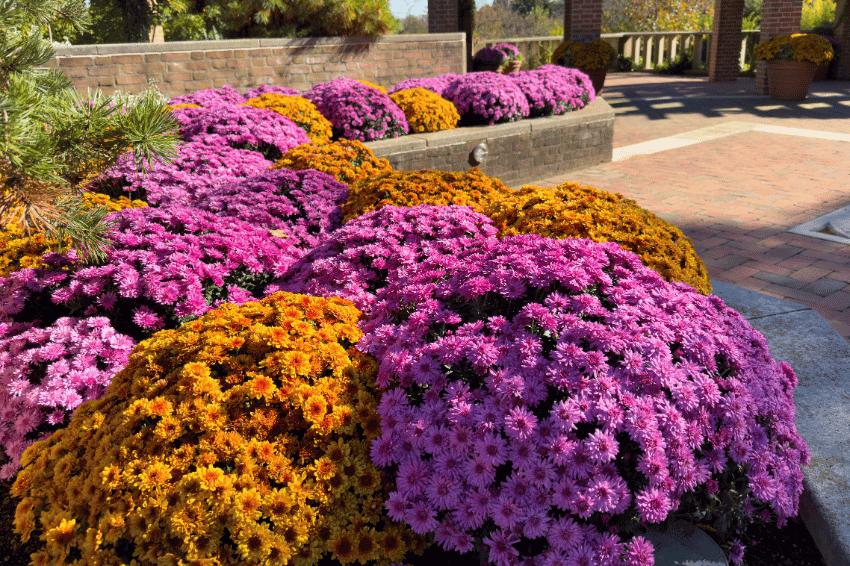Front gardens that stay vibrant from January through December do not rely on luck; they rely on thoughtful sequencing of plants that share the stage as the year unfolds. In communities such as Barrington, Highland Park, and Lake Bluff, the challenge is balancing strong winters, humid summers, and quick-changing shoulder seasons. The strategy below outlines how to layer bulbs, perennials, shrubs, and small trees so that something interesting greets visitors every week of the year.
Begin with a Calendar, Not a Plant List
Successful color planning starts by charting local bloom times. Note when snowdrops appear, when crabapples peak, and when the first hard frost usually arrives. This calendar becomes the backbone of the design, highlighting gaps that need attention. For example, many North Shore gardens look wonderful in late spring yet fade during August heat. Identifying that lull early guides choices toward late-summer performers such as coneflowers and black-eyed Susan.
Anchor the Scene with Four-Season Structure
Evergreens and ornamental grasses supply an essential backbone. Boxwood hedges or dwarf Japanese cedars frame entries even when beds lie dormant. Grasses like switchgrass or little bluestem stand tall after snowfall, their seed heads catching winter light. By treating the structure first, the garden never appears bare, and seasonal flowers can shine without having to carry the entire display.
Layer Bulbs for a Rolling Spring
Plant bulbs in tiers so each layer pushes up as the prior one fades:
- Late winter – snowdrops and winter aconite slip through melting snow.
- Early spring – dwarf iris and crocus add blues, purples, and golds.
- Mid-spring – tulips and daffodils deliver bold color without crowding emerging perennials.
When bulbs are finished, their foliage can wither behind expanding hostas and ferns, hiding tired leaves while fueling next year’s flowers.
Choose Perennials by Peak Season
Think of perennials as the garden’s long-running cast. Aim for at least two star performers in every season.
- Spring flowers – bleeding heart, brunnera, and lungwort handle cool nights and bright, low sun.
- Early summer – salvia, catmint, and peony fill the gap before high summer heat.
- High summer – daylily, coneflower, and bee balm thrive when temperatures climb.
- Late summer to autumn – Russian sage, sedum, and Japanese anemone bridge the transition to fall foliage.
Inter-planting ensures one group’s fading stems are masked by another’s fresh display.
Add Shrubs for Foliage and Repeat Bloom
Shrubs provide mid-level mass and often flower more than once. Reblooming hydrangeas extend from June into September if deadheaded promptly. Viburnum adds fragrance in spring and berries for birds in late summer. In Barrington, where clay soil holds moisture, panicle hydrangeas tolerate wet springs; on Lake Bluff’s sandy ridges, dwarf spirea accepts quick drainage and salt spray from nearby roads.
Invite Autumn Fire without Waiting for Frost
Select plants whose fall color arrives gradually. Oakleaf hydrangea turns bronze before maples ignite red. Fothergilla glows orange while its neighbor, Virginia sweetspire, shifts to burgundy. Mixing foliage tones rather than relying on one brilliant tree spreads interest across several weeks.
Keep Winter Interesting
When blooms are impossible, texture and silhouette take over. Red-twig dogwood glows against snow, paperbark maple peels cinnamon curls, and dried allium heads mimic delicate sculptures. A front border that includes even two or three of these elements avoids the flat, empty look common in February.
Practical Tips for Seamless Transitions
- Match sun exposure – many front gardens face south or west, creating hot microclimates beside foundations. Group heat-loving perennials there and reserve cooler east beds for shade acanthus or hellebores.
- Stagger heights – place taller shrubs behind mid-height perennials, with ground covers fronting walkways. This stair-step profile lets every layer show without obstructing another.
- Repeat colors – echo a peony’s blush pink with fall anemone and winter heather. Repetition ties the sequence together, so the display feels deliberate rather than patchwork.
- Plan for maintenance – choose varieties that resist common pests and do not require weekly staking. A garden loses charm if peony stems collapse onto sidewalks after rain.
Fine-Tuning through the Year
Monitor beds each month. If June shows an orange-yellow dominance, slip in blue veronica later that season. When July roses pause between flushes, add annual zinnias for gap color. A notebook or phone photo log helps track what works and what needs revision next year.
Crafting Your Personal Palette
Every front garden tells a different story. A formal Georgian entry in Highland Park may call for symmetrical boxwood and white tulips, while a shingled cottage in Lake Bluff suits mixed grasses and prairie coneflowers. Begin with structural evergreens, add layered bloom cycles, then customize the color range to match architecture and personal taste.
Well-planned seasonal color rewards you with fresh views every time you pull into the drive. It welcomes guests, lifts spirits on gray days, and proves that thoughtful planting beats quantity every time. Ready to sketch your own twelve-month spectacle? Gather last year’s photos, note where interest lags, and let next season be the year your front garden stays in the spotlight from frost to frost.


